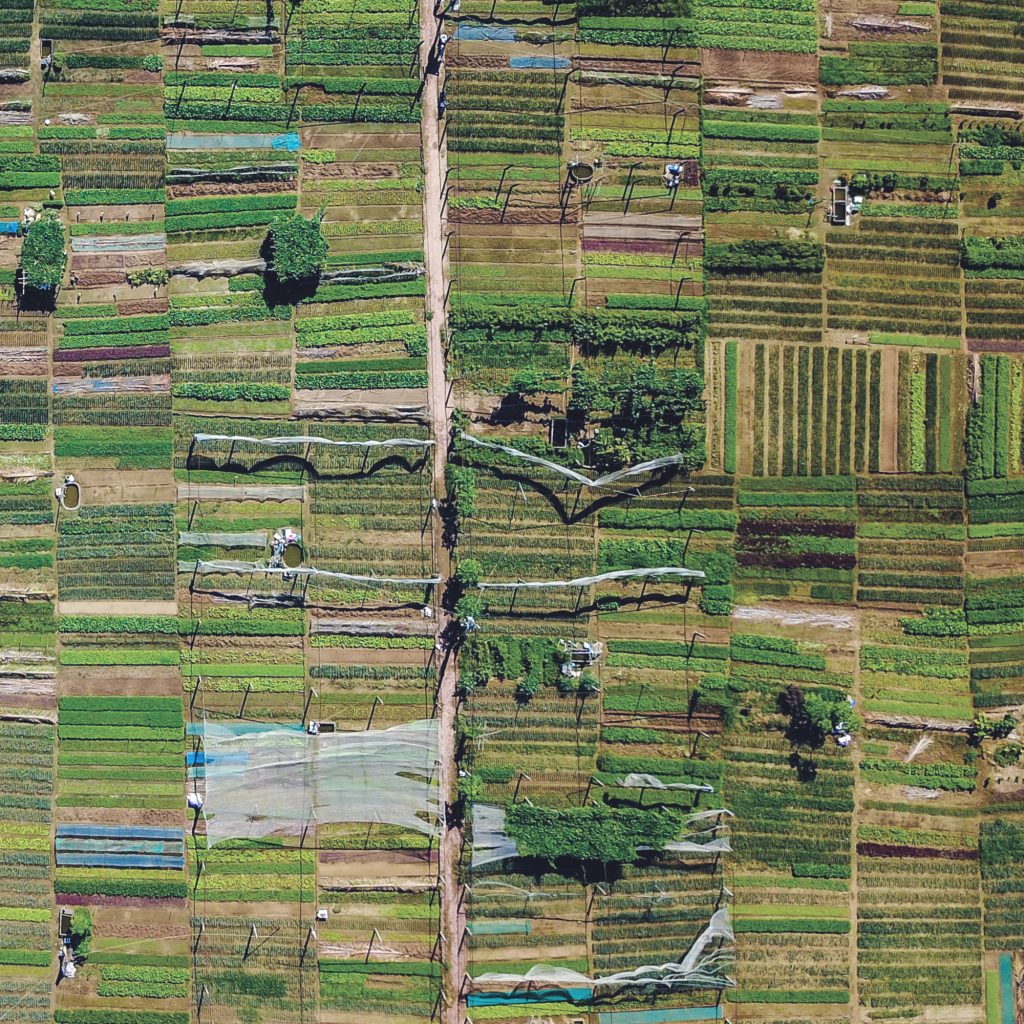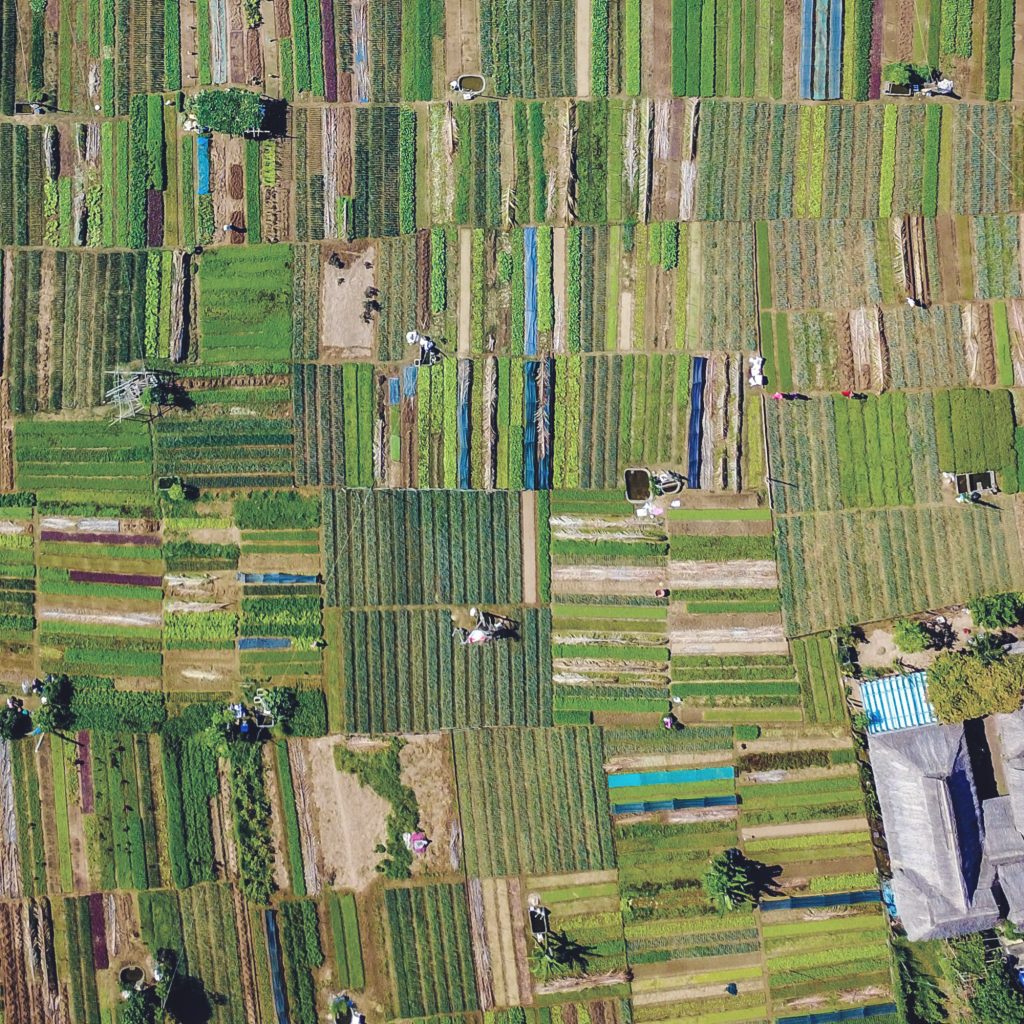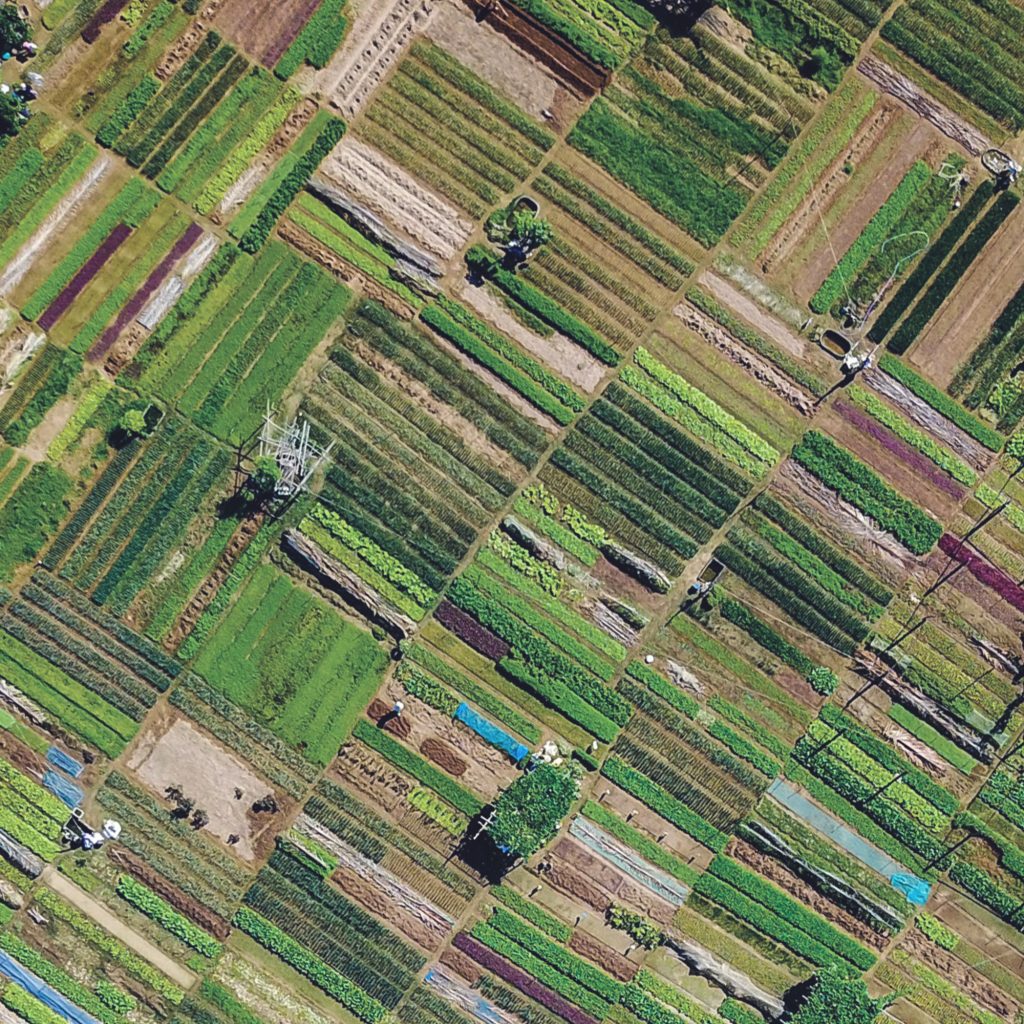Contested Terrain
Bioregions have a long and tense history. This primer charts the changing landscapes of bioregional thought, from the back-to-the-land movement to the deep ecologists and the resurgence of bioregioning today



We cannot save the world, we can only save places. The regeneration of planetary health can only happen ecosystem by ecosystem or bioregion by bioregion 1 Daniel Christian Wahl, ‘Reinhabitation: Body, Place, Bioregion’, 27 December 2020. Source
There is a great disconnect between our livelihoods and the material conditions that support them. Environmental thinkers have long recognised this rift. Since at least the 1960s, radical political ecologists have criticised shallow reform environmentalism, calling instead for deep ecological movements that believe in the intrinsic value of nature and for a human society organised along ecological lines. 2 Murray Bookchin, Dave Foreman and Steve Chase, Defending the earth: a dialogue between Murray Bookchin and Dave Foreman. Boston, MA: South End Press, 1991. Among these attempts to reimagine our relationship with the Earth is a concept that brings us down to Earth: the bioregion.
Drawing on the boundaries found in nature, rather than political boundaries determined by humans, the bioregion has been a radical way of imagining how we might live sustainably. But theorising what bioregional livelihoods might look like in practice has turned out to be fraught with tension. This article introduces the changing landscapes of bioregional thought, and asks whether its utopian project of connection to place can be turned into a radical critique of power structures in response to today’s crises.
Home Places
Bioregionalism as an eco-philosophy took root in California in the 1970s. The back-to-the-land movement was in full swing and, in recognition of the disconnect between (particularly Western) livelihoods and the ecosystems supporting them, eco-anarchists were criticising the state as a spatial configuration that was too big, too centralised and too unresponsive to ecological issues. 3 Francisco J. Toro, ‘Stateless Environmentalism: The Criticism of State by Eco-Anarchist Perspectives’. In ACME 20(2): 189–205.
It was in this context that thinkers like Peter Berg, Raymond Dasmann and Kirkpatrick Sale imagined different ways to inhabit the earth. Their offering was the bioregion: regions defined by natural borders rather than political boundaries. These could be defined by any natural characteristic delineating one place from another. The Planet Drum Foundation (founded by Peter Berg in 1973) defined the bioregion as:
a distinct area with coherent and interconnected plant and animal communities, and natural systems, often defined by a watershed. A bioregion is a whole ‘life-place’ with unique requirements for human inhabitation so that it will not be disrupted and injured. 4 The Planet Drum Foundation. (no date) About the Planet Drum Foundation. The Planet Drum Foundation. [online]. Source
In their seminal essay from 1977, ‘Reinhabiting California’, Berg and Dasmann extended this definition to include ways of knowing the land according to the people that live there, for example shared understandings of where boundaries lay, and local ecological management practices. They called this ‘terrains of consciousness’:
[Bioregion] refers both to a geographical terrain and a terrain of consciousness to a place and the ideas that have developed about how to live in that place. 5 Peter Berg and Raymond Dasmann ‘Reinhabiting California’ in Cheryll Glotfelty and Eve Quesnel (Eds.), The Biosphere and the Bioregion: Essential Writings of Peter Berg. London; New York: Routledge, Taylor & Francis Group, 2015.
According to Berg and Dasmann, bioregions were the scale at which human communities could exist sustainably and to achieve this bioregional livelihood required a process of ‘reinhabitation’. Reinhabitation involves learning to
live-in-place in an area that has been disrupted and injured through past exploitation. It involves becoming native to a place through becoming aware of the particular ecological relationships that operate within and around it. 6 Peter Berg and Raymond Dasmann ‘Reinhabiting California’ in Cheryll Glotfelty and Eve Quesnel (Eds.), The Biosphere and the Bioregion: Essential Writings of Peter Berg. London; New York: Routledge, Taylor & Francis Group, 2015.
As well as learning about sustainable subsistence, reinhabitation involves fostering human cultures that are bioregionally specific and developing place-based forms of governance. This early bioregionalism can be understood as the confluence of three key strands of environmental thought. The first was the deep ecology movement, sparked by philosopher Arne Næss’ 1973 essay ‘The Shallow and the Deep, Long-Range Ecology Movements: A Summary’ (itself inspired by Rachel Carson’s Silent Spring) that advocated for the rights of all living things, regardless of their utility to human lives. 7 Arne Naess, ‘The shallow and the deep, long-range ecology movement. A summary’, An Interdisciplinary Journal of Philosophy, August 2008, 95-100. Through this movement, the writings of Wendell Berry and Aldo Leopold ’s ‘Land Ethic’ framework were generating alternative narratives about a relationship to the land, focusing on the pleasures and ethics of interconnectedness with nature. This revaluing of nature and non-anthropocentric approach supported bioregionalism’s view of humans as part of ecology, rather than outside of it.
The second is an economic current. The landmark Club of Rome report, The Limits to Growth, was published in 1972 and was the first report based on computer models of global resources to suggest that planetary resource depletion was unsustainable. It was closely followed by E. F. Schumacher’s Small is Beautiful in 1973, which argued that the economy should be oriented towards human wellbeing while respecting natural limits. These texts supported the eco-anarchist critique of the economy and the state in environmental governance.
Finally, there was a social ecology current. Social ecology emerged in direct response to deep ecology, as Murray Bookchin (who was previously strongly associated with deep ecology) publicly criticised the movement as ‘patently anti-humanist’ and as ignoring the social roots of environmental problems: The notion that man must dominate nature emerges directly from the domination of man by man. 8 Murry Bookchin, ‘Social Ecology vs. Deep Ecology: A Challenge for the Ecology Movement’, Green Perspectives: Newsletter of the Green Program Project, nos. 4-5, 1987; Murry Bookchin, Post-Scarcity Anarchism. Ramparts Press, 1971.
Bookchin argued for a social ecology
based on the conviction that nearly all of our present ecological problems originate in deep-seated social problems. It follows, from this view, that these ecological problems cannot be understood, let alone solved, without a careful understanding of our existing society and the irrationalities that dominate it. 9 Murry Bookchin, Social Ecology and Communalism. AK Press, 2006.
Bookchin envisioned ‘ecological utopias’, where human communities are rooted in local ecology and mirror the way the ecology organises itself, rather than human communities reflecting their dominion over each other onto nature. At the intersection of these ideas, bioregionalism began to stabilise into an eco-philosophy, with thinkers imagining a world made up of autonomous and self-sufficient bioregional communities, inhabited by people that felt deep responsibility and stewardship towards their bioregion.
Shadow Places
For all of bioregionalism’s supposed democratic and utopian values, the movement began to be discredited from the 1990s. There were four strands of critique that led prominent thinkers, such as Sarah Whatmore, to describe bioregionalism as ‘analytically and politically misconceived’. 10 Sarah Whatmore, ‘Bioregionalism’. In D. Gregory, R. Johnston, G. Pratt, M. J. Watts and S. Whatmore (eds), The Dictionary of Human Geography. Oxford: Wiley Blackwell, 2009.
The first was a critique of bioregionalism’s strategies. The growing recognition of the climate crisis and its global scale shifted the gaze of environmental politics; the small-scale focus of bioregionalism no longer seemed tenable. While the ecological issues of concern in the 1970s (such as pollution) made sense within the purview of bioregionalism, CO₂ clearly refuses to remain in place. 11 This can be seen in the shift from the environmental action of groups like Earth First!, who were concerned with logging, pollution and the destruction of wild places, to later forms of environmental action targeting acid raid, the ozone layer, and then fossil fuels (see Langford, 2022, Source).
It is easy to love the beautiful places that we might live, and to ignore the other, less beautiful and unknown places that support our livelihoods.
The second was a critique of the lack of attention given in bioregional thought to the many places that support our lives. Critical analyses of power in the ecological and environmental crises have challenged the focus within bioregionalism on the singular places that we live. As Australian philosopher Val Plumwood writes,
Developing a politics and ethics of place has great potential to clarify, focus and connect environmental and ecojustice concerns … An important missing ingredient in the bland ‘celebration’ of ‘sense of place’ is a consideration of power relationships—whose place is made better, whose worse, and what patterns can be discerned? 12 Val Plumwood, Shadow Places and the Politics of Dwelling. Australian Humanities Review 44: 139–150, 2008.
It is easy to love the beautiful places that we might live, and to ignore the other, less beautiful and unknown places that support our livelihoods. Plumwood describes these as shadow places, the places that ‘provide our material and ecological support, most of which, in a global market, are likely to elude our knowledge and responsibility’. 13 Ibid.
Third was a spatial critique being generated in Western academic thought. In the social sciences, post-structural turns shifted away from understanding place as ‘natural’ in favour of unpacking the social construction of place. It resisted boundary-making and defining place in essentialist ways. As Castree writes, this was underpinned by two assumptions:
The first is that ideas of nature are typically about fixity and permanence. The second is that these ideas are, in political and moral terms, typically conservative. 14 Castree Castree, ‘Nature is Dead! Long Live Nature’, Environment and Planning A: Economy and Space 36(2): 191–194, 2004.
The social, rather than the natural, was seen as a more productive site for transformation. Simultaneously, there was a resistance to what Doreen Massey describes as reactionary understandings of place, that are antagonistic to outsiders and based on a coherent and ‘seamless’ identity. 15 Doreen Massey, ‘A Global Sense of Place’, Marxism Today. June 1991: 24–29. Instead, Massey sought to demonstrate how place might be unique, but is always multiple, contested and exists in relation to other places. Bioregionalism focuses on nature as it is, rather than through a human lens, and its centring of place seemed, to some, to be essentialist and conservative.
Bioregioning cracks open the world into a patchwork of place-based experiments
Finally, and perhaps most troubling, is an ethical critique of bioregionalism. The way in which a desire for human communities delineated by natural landscape sounds somewhat like environmental determinism or calls for lebensraum. As Olsen asks,
On what basis, for example, do the inhabitants of a bioregion come together? Who qualifies as a citizen or ‘dweller’ (to use the Heideggerian language of bioregionalism) within a bioregion? Is simply being present in a place enough or would some kind of ‘natural’ criteria be invoked? In short, how much room would there be in a bioregional community for the ‘unrooted’, the immigrant, and the cosmopolitan? 16 Olsen, J. (2000) The Perils of Rootedness: On Bioregionalism and Right Wing Ecology in Germany. Landscape Journal 19(1–2): 73–83.
The need for belonging can translate into reactionary nationalisms that seek to exclude all that is not native, in a form of right-wing ecology. In addition, bioregionalism’s strategies of reinhabitation and becoming native carry colonial undertones:
Claiming the ‘nativeness’ of one’s belonging in place is a political move that delegitimizes and erases previous claims, which is exactly the process to which settler colonialism – and its industrial, consumptive modes of relating to nature – refers. 17 Wiebe, J. (2021) Cultural Appropriation in Bioregionalism and the Need for a Decolonial Ethics of Place. Journal of Religious Ethics 49(1): 138–158.
At best then, bioregionalism can be understood as having a naive political approach; at worst, a colonial project that assumes settler futurity and appropriates Indigenous livelihood practices. 18 Eve Tuck and K. Wayne Yang, ‘Decolonization is not a metaphor’. In Decolonization: Indigeneity, Education & Societ. 1(1), 2012: 1–40.
Becoming places
Despite these critiques, bioregional ideas are being reinvigorated in academic thought, environmental policy and activist practice, where there is a return to ‘place’ as both a target for action and source of alternative livelihoods. There are many reasons for this, but among them are four interconnected strands of thought which make the bioregion a useful framework.
First is the recognition that places are unique and specific, and that capitalist industrialisation cannot be the only pathway for development. For example, Arturo Escobar’s concept of the ‘pluriverse’ has offered an alternative theorisation of development:
Pluriversal transitions mean transitions from an allegedly globalized world made up of a single world … that of capitalist modernity, to a world where many worlds fit. The pluriverse also refers to life’s ceaselessly unfolding character, its continued co-emergence out of the dynamics of matter and energy. 19 Emphasis added. Escobar, A., Tornel, C., and Lunden, A. (2022) On design, development and the axes of pluriversal politics: An interview with Arturo Escobar. Nordia Geographical Publications : 1–20. Source
Beyond place being understood simplistically as the site at which we might experience biophilia or develop a sense of stewardship, place is understood as a source of ontological and practical alternatives.
Second is the influence of systems thinking and socio-ecological systems research. Thinkers like Carl Folke and the Stockholm Resilience Centre have conceptualised the world as made up of complex and adaptive socio-ecological systems, in which the human dimension has become overly dominant. Drawing on a lineage of systems-thinkers such as Donella Meadows, this form of thought has raised a concern for how humans are interconnected with biotic and abiotic systems, at a range of scales and networks. Ecological design (including from figures such as John Thackara and Daniel Christian Wahl) has built on such ideas, searching for patterns in nature and learning from nature (e.g. biomimicry) 20 Janine M. Benyus, Biomimicry: Innovation Inspired by Nature. New York, NY: Harper Perennial, 2002. rather than aiming for its mastery.
Third is an intellectual move towards understanding place as both relational and hybrid. 21 Sarah Whatmore, Hybrid Geographies. London: SAGE Publications Ltd., 2002. Rather than place being a human construct, geographers have recognised it to be the outcome of multispecies worldbuilding. Relatedly, attention has been paid to Indigenous ontologies of place, such as the concept of Country, 22 See Bawaka Country, Sarah Wright, Sandie Suchet-Pearson, Kate Lloyd, Laklak Burarrwanga, Ritjilili Ganambarr, Merrkiyawuy Ganambarr-Stubbs, Banbapuy Ganambarr and Djawundil Maymuru, ‘Working with and learning from Country: decentring human author-ity’. In cultural geographies 22(2), 2015: 269–283. as ways of rethinking humanity’s relationship to the Earth and non-human Others. 23 Indeed, Braiding Sweetgrass (Robin Wall Kimmerer) offers a North American Indigenous interpretation of bioregionalism.
Finally, there is a pragmatic motivation for the more-than-local, smaller-than-global scale of the bioregion. It offers a scale at which tangible impacts of action can be felt; a sphere of influence and responsibility that one can connect to, and a closeness that can be the basis for love, care and stewardship. In this confluence of ideas relating to place and ecology, the bioregion is once again being mobilised.
Speculative Places
Bioregioning: from verb to ‘bioregion’; act of bringing your bioregion into existence through: grounding, connecting, celebrating, belonging. 24 Tyler, E. (n.d.) About bioregioning. Bioregioning. [online]. Source
One of the most interesting reworkings of bioregionalism is the emerging language of bioregioning, the verb, being mobilised by activists and thinkers such as John Thackara, Isabel Carlisle and the UK Bioregional Learning Centre. Bioregioning maintains the key provocations of bioregionalism but transposes them into a new register. Rather than seeking to define and map bioregions, looking for their true essence, bioregions are understood as dynamic, continually and actively co-created by those (human and non-human) that live there. Their truest form can never be achieved, and thus the negotiation of our togetherness is always an open question. Bioregioning refuses to know the destination in advance, instead focusing on the process, rather than outcome, of change. This turns the bioregion into a political project with the possibility of a radical critique of power.
Bioregioning cracks open the world into a patchwork of place-based experiments, each unfolding in negotiation between those that live there. Such an image is hopeful yet filled with tension, simultaneously dizzyingly complex yet brimming with opportunity.